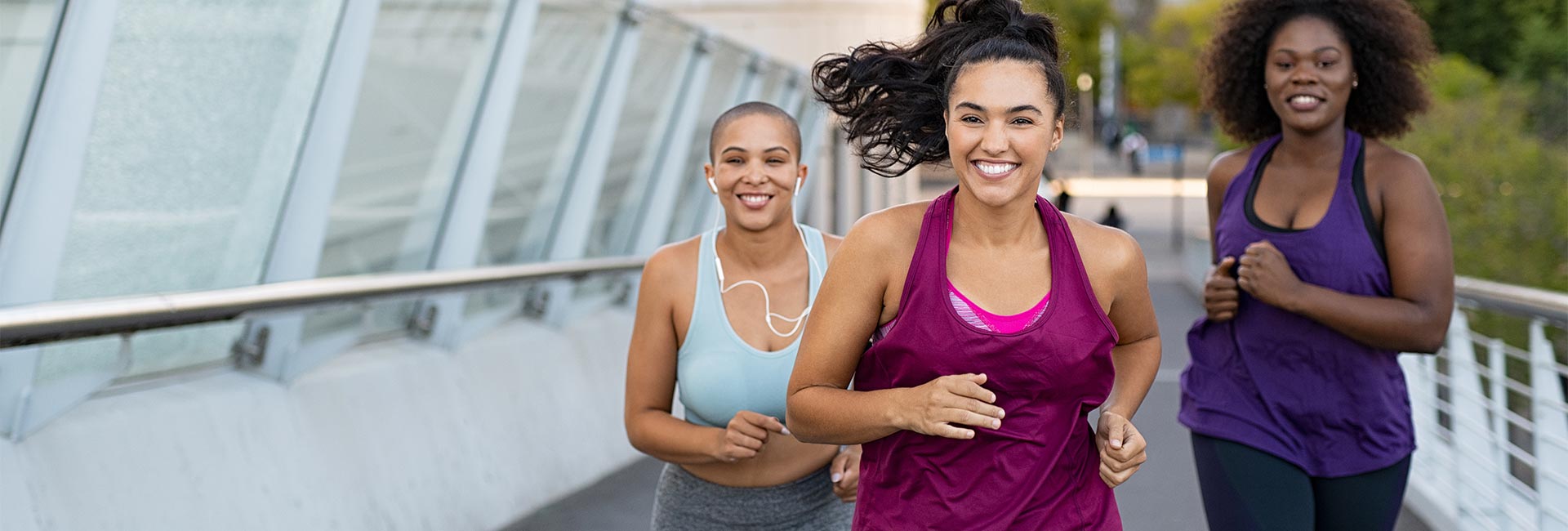Imagine you are out on a hike. Your pack is heavy and the fit just isn’t quite right. Your shoulders begin to get sore. That discomfort travels up to your neck, and as you try to adjust and ease the pain, you start to feel it in your low back. Best course of action? Take off the weight and readjust. But what if you couldn’t? What if that weight was on your chest, and not your back? This is what millions of women with larger breasts experience daily when they are active and wearing ill-fitting bras.
It has been estimated that 70-100 percent of women are wearing the wrong size bra. Though this is a daily issue for most women, this is even more impactful in women participating in fitness activities. An Australian study showed that more than 50 percent of elite Australian female athletes are wearing bras with inadequate support. But why is this an issue?
Health consequences of ill-fitting bras
Breast pain impacts roughly 60 percent of women at rest, and increases as women become more active.
The anatomy of breast tissue, with minimal structural support from thin Coopers’ ligaments and the skin around the tissue, does not provide the adequate stabilization needed for the weight of the tissues. When inadequately supported by an ill-fitting bra this can contribute to other orthopedic pains. This includes poor posture, neck and shoulder pain, neural tension into the arms, low back pain, and deep grooves into the top of the shoulders.
These issues are also related to self-consciousness and withdrawal from participation in athletics and fitness activities, which consequently can contribute to unhealthy weight and depression.
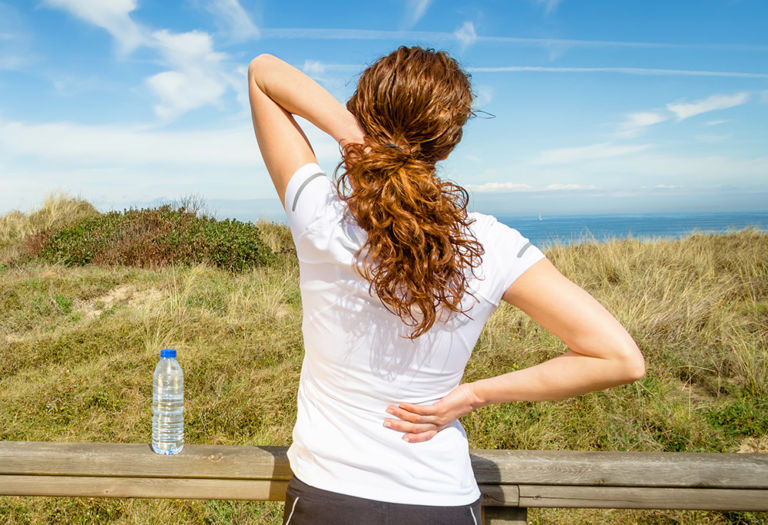
According to a study conducted through Breast Research Australia (BRA), a correctly fitting sports bra was able to alleviate 85 percent of orthopedic symptoms and reduced the need for breast reduction surgeries.
4 considerations for bra selection
Knowing how important it is to have the correct bra: How do you choose the right bra for you? There are many different factors at play in choosing a correct bra including age, breast size, activity you plan on completing, and personal preference.
- As we age, the structures which support our breast tissues begin to stretch with the weight of them. Due to this, we often require greater support to avoid breast pain with activities.
- Our breast size impacts the support structures in a very similar manner thus contributing to the need for greater support.
- One of the largest contributing factors to bra selection is your choice of activities. The movement of your breasts differs with activities and thus you must support them differently. Activities which involve a lot of jumping or plyometrics, such as jogging, will require more support vertically. While activities which involve more cutting or side-to-side movements, such as pickle ball, will need more horizontal support.
- There is also the matter of personal preference. Some bras are just more comfortable depending on your body type.
Sports bra breakdown – here are your options
There are three main types of sports bras to be considered.
- The first, and most common, is the “crop top” sports bra.
In the crop top style, the breasts are compressed as a unit against the chest wall with fabric made of a strong elastic. They are not usually adjustable with static shoulder straps and bands without clasps or underwire. These are often best for those with smaller chests or those completing lateral movement-based activities.
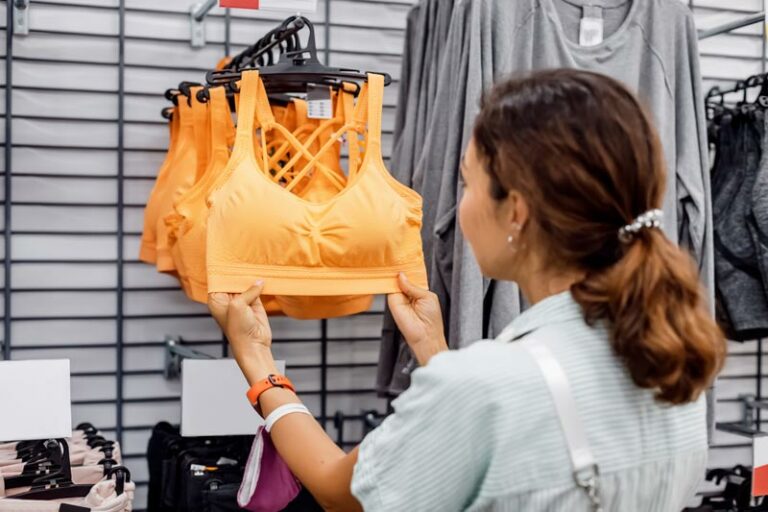
- The second type is the “encapsulation” type sports bra.
This style has a cup for each breast and is more easily modified as the straps and band are adjustable. These are often available with padding/underwire depending upon preference. These most closely resemble a daily use or a fashion bra and fully encase the whole breast to prevent excessive movement. The encapsulation type of bra is best for plyometric or running type activities, or if you have breasts which need more support.
- The third type of bra is the “hybrid.”
These bras are a combination of the crop top and encapsulation bras in that they have hooks at either the front or back of the band, adjustable straps, and separate cups though they still holding the breasts close to the chest wall.
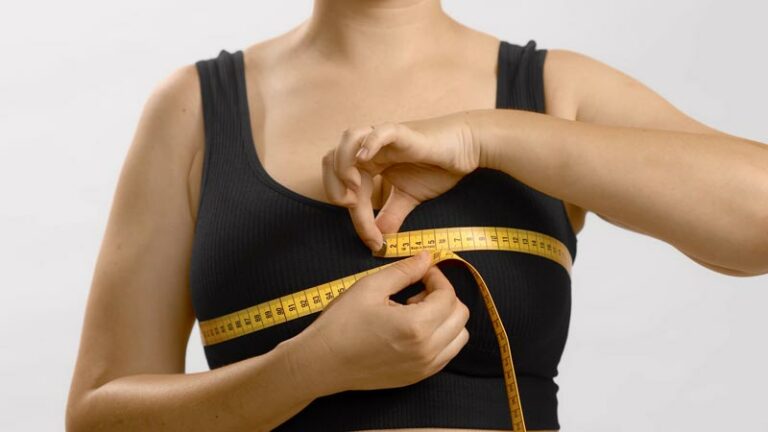
Some women, often with larger cup sizes, need to wear two bras at once. In those cases, it is often an encapsulation bra under a crop top bra. When wearing two it is recommended to wear bras with differing strap orientations to better distribute the force across your shoulders and back and improve comfort.
How to choose a bra that fits
Once you choose the bra that is best suited for you and your activities, how do you know it fits correctly?
There are a few areas to check to ensure comfort and support.
- When assessing the band, check that the contact with your body is firm but comfortable, and that it does not ride up when lifting your arms overhead.
- The cups fit correctly when they cover the entire breast (including into the arm pit). If the fit is right, there are no bulges over the top of the cups, which would indicate it is too small, or wrinkles/gaps in the cup, indicating it is too big.
- The straps should be firm across the shoulders without digging in or slipping off. The band should be taking most of the weight of the breasts from below and the compression from the cups should hold the cups firm. You should not feel the weight primarily at the shoulder straps.
- If you choose to utilize an underwire, it should be firm against the breastbone and ribs and not be on top of any breast tissue.
Once you have assessed each of these areas, do a few movements in front of the mirror that mimic your normal fitness or recreational activities. Double check to ensure there is not excessive breast movement or discomfort with your movements. If there is only a small amount of comfortable movement the bra is a good fit.
In conclusion, the impact of wearing the right sports bra goes beyond mere comfort; it plays a crucial role in preserving your overall well-being. Unfortunately, there is minimal education on proper bra fitting available in the United States, which can lead to a myriad of differing orthopedic issues for active and aging individuals. Mothers often guide their daughters based on appearance or comfort, unaware of the components essential for a proper fit, and this becomes a cycle from generation to generation.
Ask a physical therapist
To navigate this challenge and ensure optimal comfort and support while avoiding musculoskeletal consequences, consulting with a physical therapist is a proactive step. Physical therapists possess a deep understanding of biomechanics and the intricate relationship between bras, breasts, and overall musculoskeletal health. They can provide personalized guidance on selecting the right sports bra based on your body type, age, and the activities you engage in regularly.
A physical therapist can conduct a thorough assessment and will consider your specific movements during fitness or recreational activities, ensuring that your sports bra not only fits correctly but also minimizes discomfort and prevents excessive breast movement.
By seeking guidance from a physical therapist, you empower yourself to make informed choices about your athletic apparel. Together, you can explore options that enhance your comfort, mitigate orthopedic concerns, and promote a positive and active lifestyle. Remember, your physical therapist is not just here to keep you moving; they’re here to help you move comfortably and confidently.
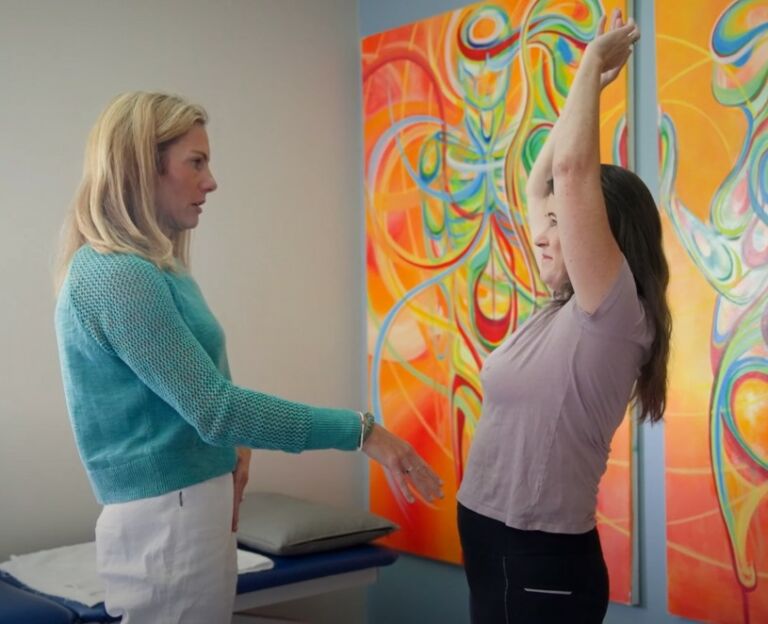
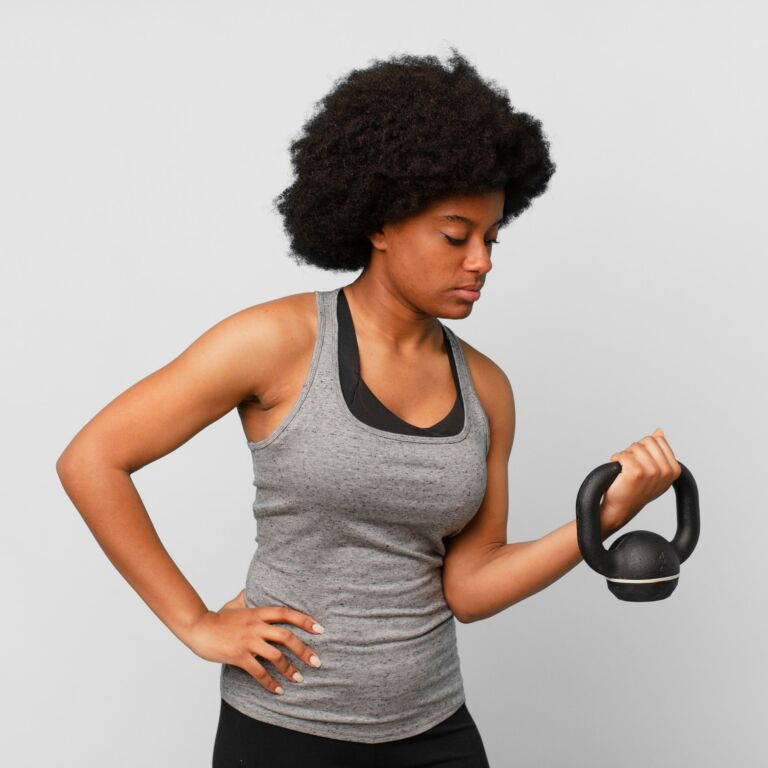
Let us help you choose.
Physical therapists possess a deep understanding of biomechanics and the intricate relationship between bras, breasts, and overall musculoskeletal health. If you have breast, back or neck pain or other issues with your bra fit, we can help!
